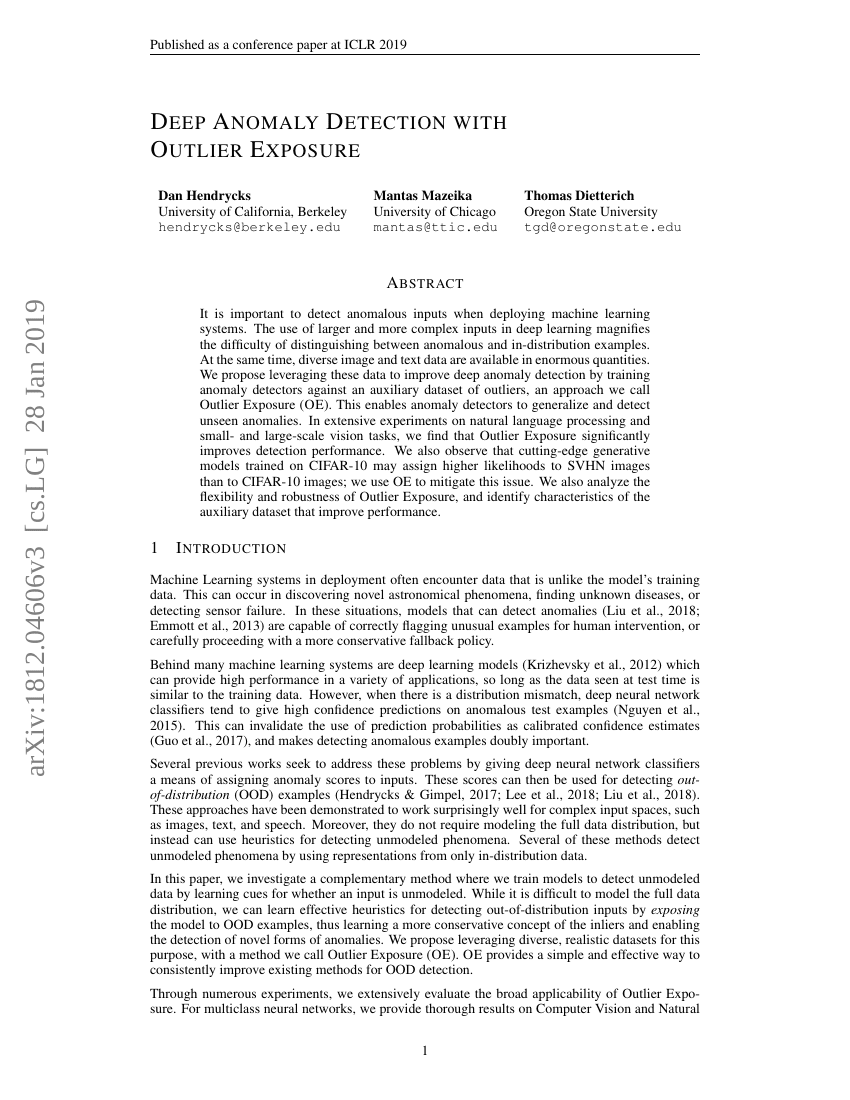
摘要
在部署机器学习系统时,检测异常输入是非常重要的。深度学习中使用的更大和更复杂的输入增加了区分异常样本和分布内样本的难度。与此同时,大量的图像和文本数据以多种形式存在。我们提出利用这些数据来改进深度异常检测,通过使用一个包含离群点的辅助数据集训练异常检测器,这种方法称为离群点暴露(Outlier Exposure, OE)。这使得异常检测器能够泛化并检测未见过的异常情况。在广泛的自然语言处理和小规模及大规模视觉任务实验中,我们发现离群点暴露显著提高了检测性能。我们还观察到,在CIFAR-10上训练的前沿生成模型可能对SVHN图像赋予更高的似然值,而对CIFAR-10图像赋予较低的似然值;我们使用OE来缓解这一问题。此外,我们分析了离群点暴露的灵活性和鲁棒性,并确定了能够提高性能的辅助数据集的特点。
代码仓库
oliverzhang42/ood_medical_images
pytorch
GitHub 中提及
JakobCode/UncertaintyInNeuralNetworks_Resources
pytorch
GitHub 中提及
guyAmit/GLOD
pytorch
GitHub 中提及
albertkx/conal
pytorch
GitHub 中提及
jun-cen/unified_open_set_recognition
pytorch
GitHub 中提及
AlexMeinke/Provable-OOD-Detection
pytorch
GitHub 中提及
sayakpaul/Generalized-ODIN-TF
tf
GitHub 中提及
zjysteven/mixoe
pytorch
GitHub 中提及
hendrycks/outlier-exposure
官方
pytorch
GitHub 中提及
基准测试
| 基准 | 方法 | 指标 |
|---|---|---|
| out-of-distribution-detection-on-cifar-10 | WRN 40-2 (MSP Baseline) | AUROC: 97.8 FPR95: 34.94 |
| out-of-distribution-detection-on-cifar-10 | WRN 40-2 + OE | AUROC: 97.8 FPR95: 9.50 |
| out-of-distribution-detection-on-cifar-10-vs | WRN 40-2 + OE | AUPR: 76.2 AUROC: 93.3 |
| out-of-distribution-detection-on-cifar-100 | WRN 40-2 (MSP Baseline) | FPR95: 62.66 |
| out-of-distribution-detection-on-cifar-100 | WRN 40-2 + OE | FPR95: 38.50 |
| out-of-distribution-detection-on-cifar-100-vs-8 | OE | AUROC: 86.9 |